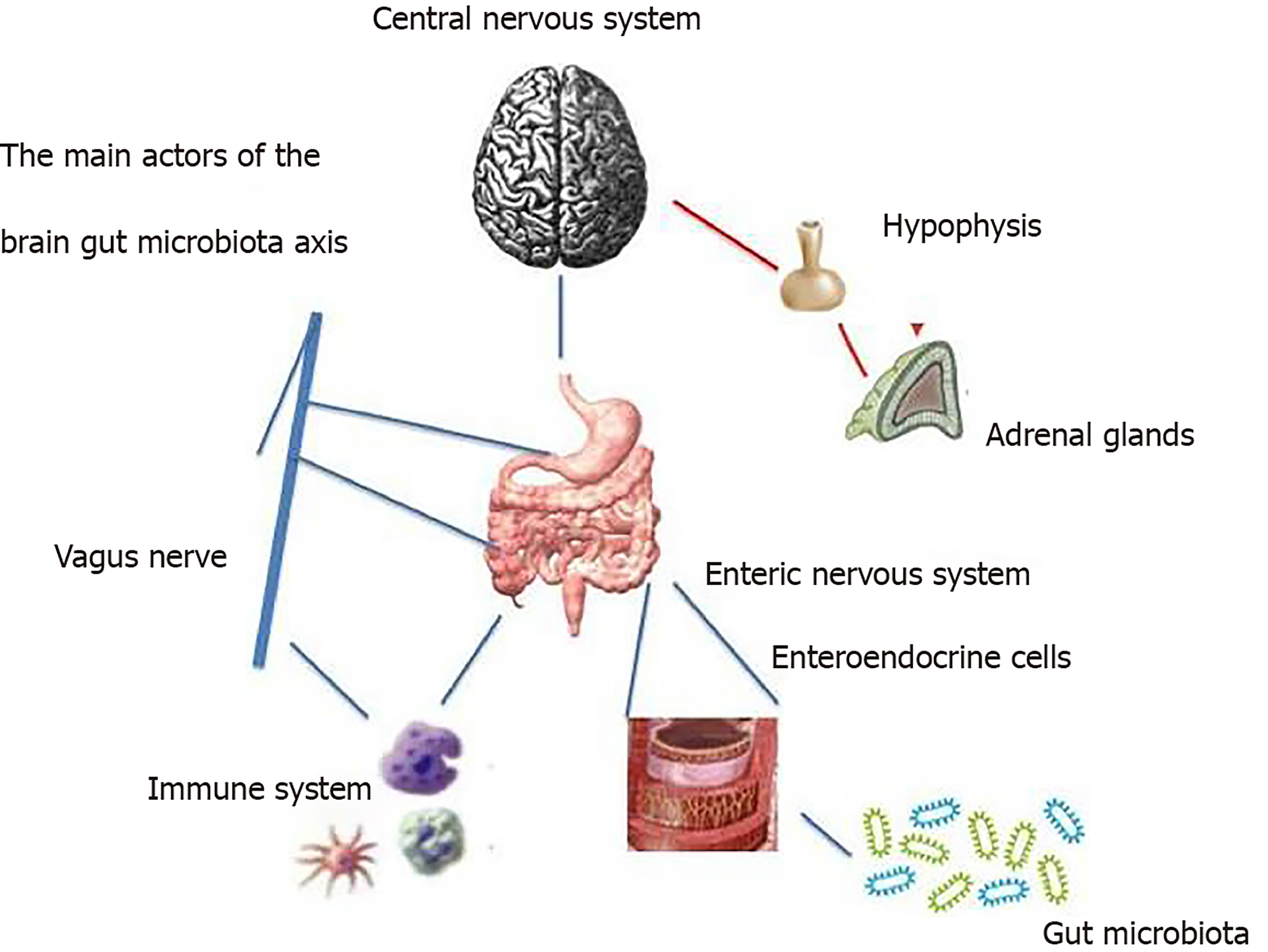Copyright
©The Author(s) 2020.
World J Clin Cases. Mar 26, 2020; 8(6): 1013-1025
Published online Mar 26, 2020. doi: 10.12998/wjcc.v8.i6.1013
Published online Mar 26, 2020. doi: 10.12998/wjcc.v8.i6.1013
Figure 1 The main actors in the gut–brain-microbiota axis.
The gut-brain-microbiota axis is defined as a two-way communication system that allows intestinal microbes to communicate with the brain and vice versa. The multiple inter-related structural networks of the central nervous system regulates autonomic nervous system input that alter gut microbial composition and function indirectly by modulating the microbial environment in the gut, and by affecting also the immune response. On the other hand, the gut microbiota can interact with the brain indirectly via gut-derived metabolites by acting on afferent vagal and/or spinal nerve endings, or directly via microbe-generated signals which act on enteroendocrine cells. Furthermore, the neuroendocrine signaling network mediated by the hypothalamic-pituitary-adrenal) axis, which is activated by the integrative reactions of specific centers in the central nervous system, represents a central integrative system mandatory for the successful physiological adaptation of our organism to different stressors.
- Citation: Sinagra E, Utzeri E, Morreale GC, Fabbri C, Pace F, Anderloni A. Microbiota-gut-brain axis and its affect inflammatory bowel disease: Pathophysiological concepts and insights for clinicians. World J Clin Cases 2020; 8(6): 1013-1025
- URL: https://www.wjgnet.com/2307-8960/full/v8/i6/1013.htm
- DOI: https://dx.doi.org/10.12998/wjcc.v8.i6.1013









